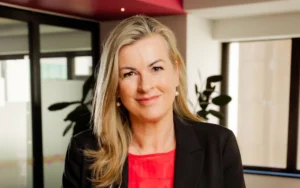Chris Cuffe’s top 10 lessons revisited
Chris Cuffe first let the industry know, in 2015, what his 10 biggest lessons from years at the top in funds management were. He revisited and updated the list in September 2019 and has now done so once again. But the original list is probably timeless.
He also added a few extra tips last week, on the first day of the annual Morningstar conference for individual investors. As Graham Hand, his old friend, former colleague and former business partner said while introducing Cuffe before their session at the event, in many ways Cuffe’s career mirrored the evolution of the super and funds management industry.
Hand and Cuffe started the weekly newsletter CuffeLinks in 2012, after both had shifted from full-time employment to a range of business and other activities. Graham did most of the day-to-day publishing slog, but the job became a little easier last year after the masthead was changed to FirstLinks and then sold to Morningstar.
But their association goes back to 1988, when Cuffe, then 27, was appointed to run the newly formed First State Fund Managers and Hand was working in the organisation’s treasury department. Colonial First State, as it became under Cuffe’s leadership, grew into the largest fund manager in Australia by the time he left in 2003, and Hand had moved into senior roles in wealth management along with it.
One of several industry-linked activities still occupying Cuffe’s time is his 12-year-old charitable multi-manager fund, the Third Link Growth Fund, which provides him with plenty of observations to hone his thoughts on the still-evolving world of super and investing.
Hand told the Morningstar audience that time prevented a discussion of each lesson from the previous lists, but he got through most of them anyway, got a little waylaid too, and added a couple of extras. Here is the latest update. May there be many more.
Past performance
On every fund manager’s or super fund’s advertising will invariably be the words: ‘Past performance is not necessarily an indicator of future performance’. Cuffe says he is not particularly impressed by the line. “When I look at a manager, I want to see the past performance over different time periods and I really am interested in long-term performance. With Third Link, I keep a manager for at least three years and, if I think a change may be warranted, perhaps four or five years. Their style may not have worked for that time, for example. Funds management is not an exact science. It’s like a cricketer’s average. Things change.”
Active means ‘swing the bat’
You shouldn’t pay active fees for what amounts to index-hugging management. “Most funds management businesses are businesses – their shareholders want a profit. So, a fund manager won’t be too game to be different from the index. A lot of managers say they are active but when you look at the figures [the underlying stocks] they are only different in a small way. I don’t see that as active. It’s no wonder that passive investing is growing in this country.”
Cuffe says: “I want managers who are definitely active and I want them to prove that to me. I want them to swing the bat.”
Capacity matters
With funds under management, there are capacity barriers in each asset class, where it gets difficult to continue to produce good returns. “In active Australian equities I think about $4-5 billion is capacity, but in small caps, I’ll be shy on a manager with more than $1 billion because it’s so hard,” he says.
“Generally speaking, larger amounts take longer for the manager to get in and out of a stock. In some asset classes, such as fixed income, size is actually your friend. I think in global large caps, size is probably not much of an issue, either.”
LICs
“People were putting money into LICs up until about a year ago but now they seem to be a bit on the nose. A lot of people didn’t realise that there was an extra layer of supply and demand outside the portfolio, so they can often trade at a discount. This was probably not well enough understood by investors.”
(The first two lessons from the 2019 list – see link below – were omitted from last week’s discussion with Graham Hand. They were: ‘Most Financial Services are Sold not Bought’ and ‘Joe Average Doesn’t Have a Clue Where to Invest’.)
Performance fees
“I have mixed views on performance fees. Some managers have them and I’m happy to pay. But what worries me is when they have management fees as well, which begs the question of: ‘What are they there for? Are they just to get an index return?’ If so, you haven’t got a good result but then the performance fee kicks in after it… Some of the funds I invest in only have performance fees and there are others for which the management fee is an advance on the performance fee,” Cuffe says.
Hand says: “There’s no industry standard for performance fees. When I drafted offer documents for funds management it was the most difficult section to write.” With tech stocks, for instance, the managers may be getting big performance fees just because of the performance of that sector. Cuffe says: “And then there are managers with a benchmark of cash, but they invest mainly in equities, which will on average be 4-6 per cent over cash anyway. That’s a free lunch.”
Private debt
There are always risk/return tradeoffs. Riskier assets should be priced more. “But genuine arbitrages exist,” Cuffe says. “Private debt is one of them. There are some funds which expect 7-8-10 per cent returns and they are very good. The catch is liquidity. For many investors they should think about whether everything really has to be liquid. This sector has blossomed largely because the banks are no longer lending so much [in certain sectors].”
Active versus passive
“This debate changes according to the asset class, “Cuffe says. “Personally, I think active is best in Australian equities and Australian small caps, but some areas, such as fixed interest, have different characteristics and passive suits them better. With international equities funds may be happy to be passive because it’s such a big universe… Indexed Australian equities are actually highly risky because of the concentrated risk among the top few stocks.”
‘Defensive’ and ‘growth’
“The industry has broadly talked about defensive versus growth strategies but it’s a very ‘bit and bite’ classification,” he says. “I normally think in terms of growth assets and income assets. Ask yourself where do you think you’re going to get your returns from. If you only have two categories, the average investor may think: ‘If I have a proportion in ‘defensive’ when the bad times come, I’ll be protected. But we have seen ‘defensive’ assets with huge volatility, and sometimes losses. I don’t think it’s black and white, a ‘safe’ and ‘less safe’ bucket.”
Styles
While less prominent than it was 20-or-so years ago, styles are still often used to judge managers within their peer group and to balance long-term portfolios against style cycles. For instance, the value style has been out of favour for the best part of 10 years in the US and Australia, as big tech stocks have dominated share market growth. “You can over-mix managers between value, growth, and others and end up getting the index,” Cuffe says. “Personally, I’m interested in good managers and don’t care so much about their style… It’s caveat emptor when looking at anything with categories… I don’t love blending styles. What are you trying to achieve?”
Deep value
“Deep value looks appealing but very few managers succeed in it. Sometimes a stock looks cheap for a reason; because there’s something wrong with it. Managers in that area tend to get carted away by the passage of time.”
Long/short funds
“You’d think this was a no-brainer. You can make money on both sides of the ledger. But long/short funds have often disappointed. Shorting is harder than it looks,” he says. “Even with a bad company it can take years for investors to lose confidence in it. You’re not just betting against fundamentals [you’re also betting against sentiment]. And you can get a situation where your long stocks go poorly and your short stocks also go poorly. So there’s a double whammy.”
US election
“All I know is that markets go up and markets go down,” he says. “But it’s extraordinary how much the Australian and US markets run in tandem over time. I will say that Australia will probably feel whatever the US market feels [after the election] in the short term. I think the huge tech companies will probably be completely independent of any politics.”
Most successful managers
“In my experience, the most successful managers have the conviction to invest independently of their index. They also have complete freedom to invest across markets. There’s not one index. And the managers with the best long-term returns still have periods where they don’t do so well.”
Last year’s list can be seen in the FirstLinks archive: https://www.firstlinks.com.au/my-10-biggest-investment-management-lessons .
The observations contained in lessons omitted or added in the latest list do not give them more or less importance, nor are the lists designed as rankings.











